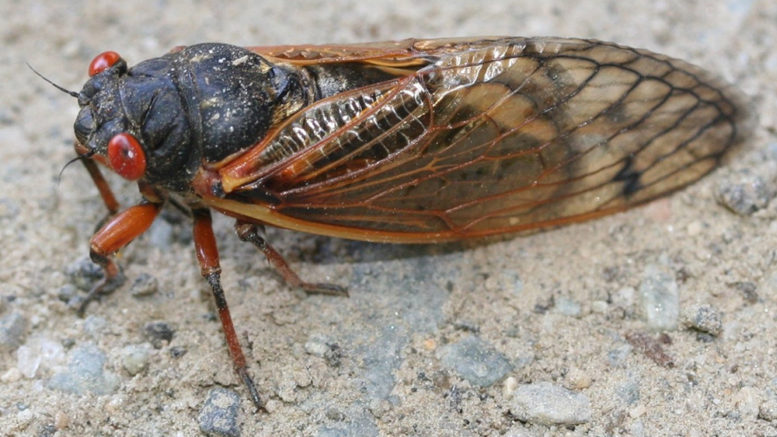By FRED SWIFT
The first of the 17-year cicada emergence has been reported in Hamilton County. Sometimes mistakenly called the “17-year Locust,” they will become increasingly seen and heard from now through June 30.
Emma Mendez at the Hamilton County 4-H Extension office says she got first reports of the insects’ arrival over the past weekend. Their appearance locally was delayed this year by chilly weather.
For the past 17 years the cicadas have been living underground, feeding on the sap of tree roots. They emerge from the ground to mate and lay their eggs. They will feed on tender twigs of young trees, but in most cases will not kill or damage a tree or other vegetation.
Rodents and other wildlife will eat the cicadas, but there are so many that most will survive to lay their eggs before gradually disappearing in July and August, according to Purdue University experts.
The colorful insects are not interested in humans or animals and therefore not dangerous. Their loud singing or buzzing is the most noticeable, sometimes disturbing effect of their presence.
Folks living in areas with numerous trees more than 17 years old will hear and see the greatest number of the unusual insects. Newer subdivisions developed on land that was formerly farm fields will not see many, if any, of the cicadas.
Scientists have yet to discover why cicadas stay underground for 17 years. A popular theory suggests that the great amount of time makes potential predators give up and find other sources of food.
Whatever the reason, if you enjoy seeing them, get a good look this year. If you don’t like hearing them, remember they won’t be back again until 2038.

